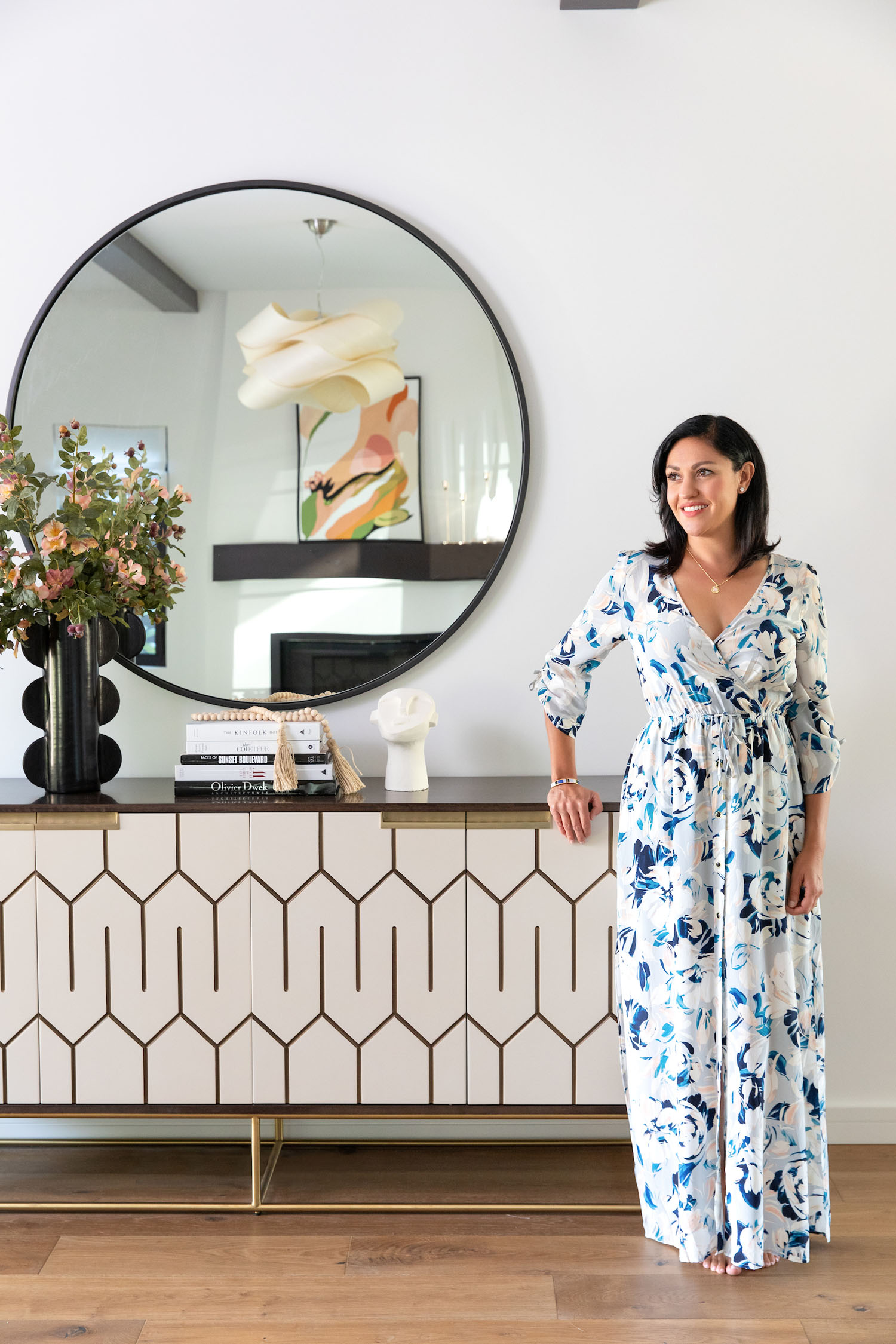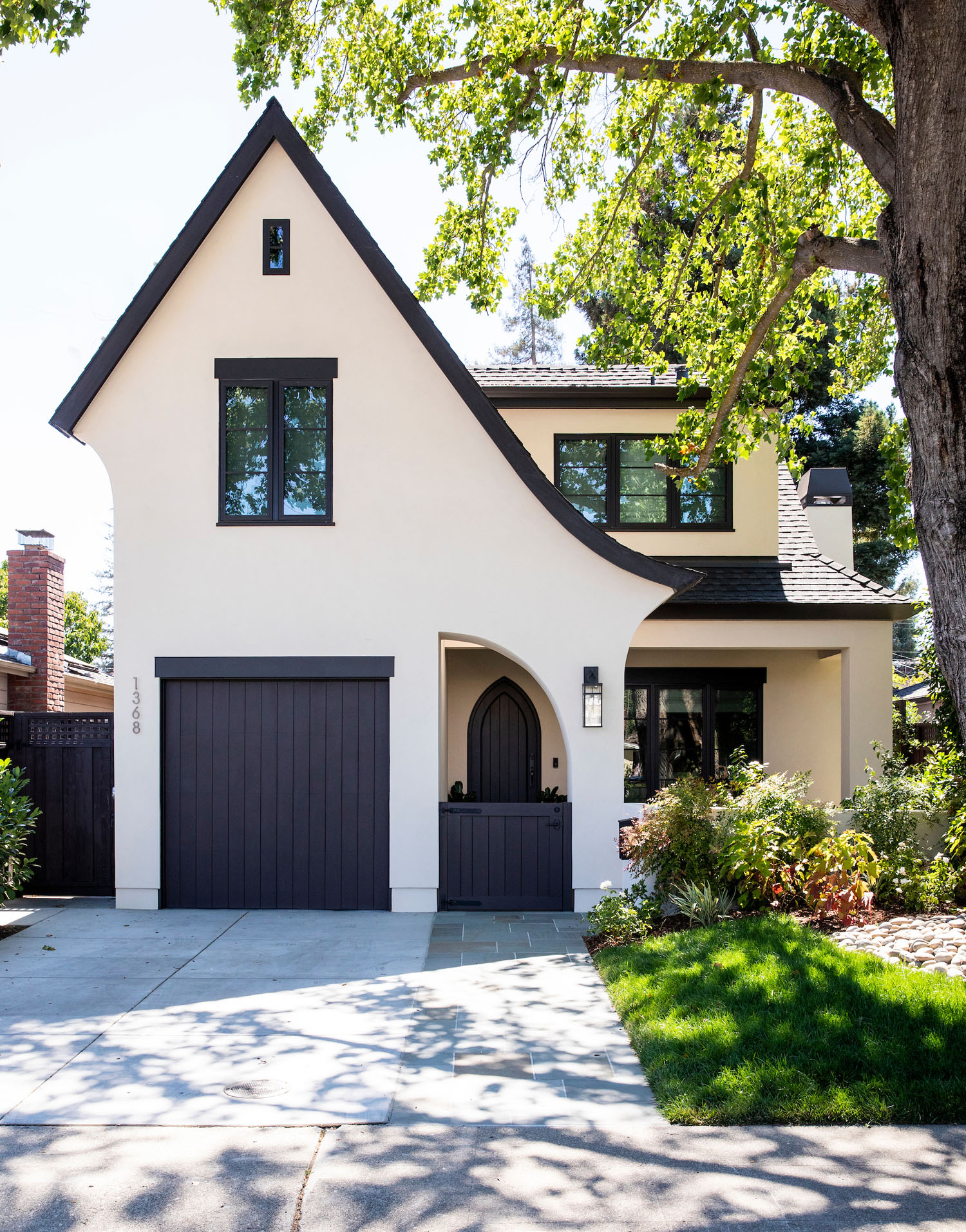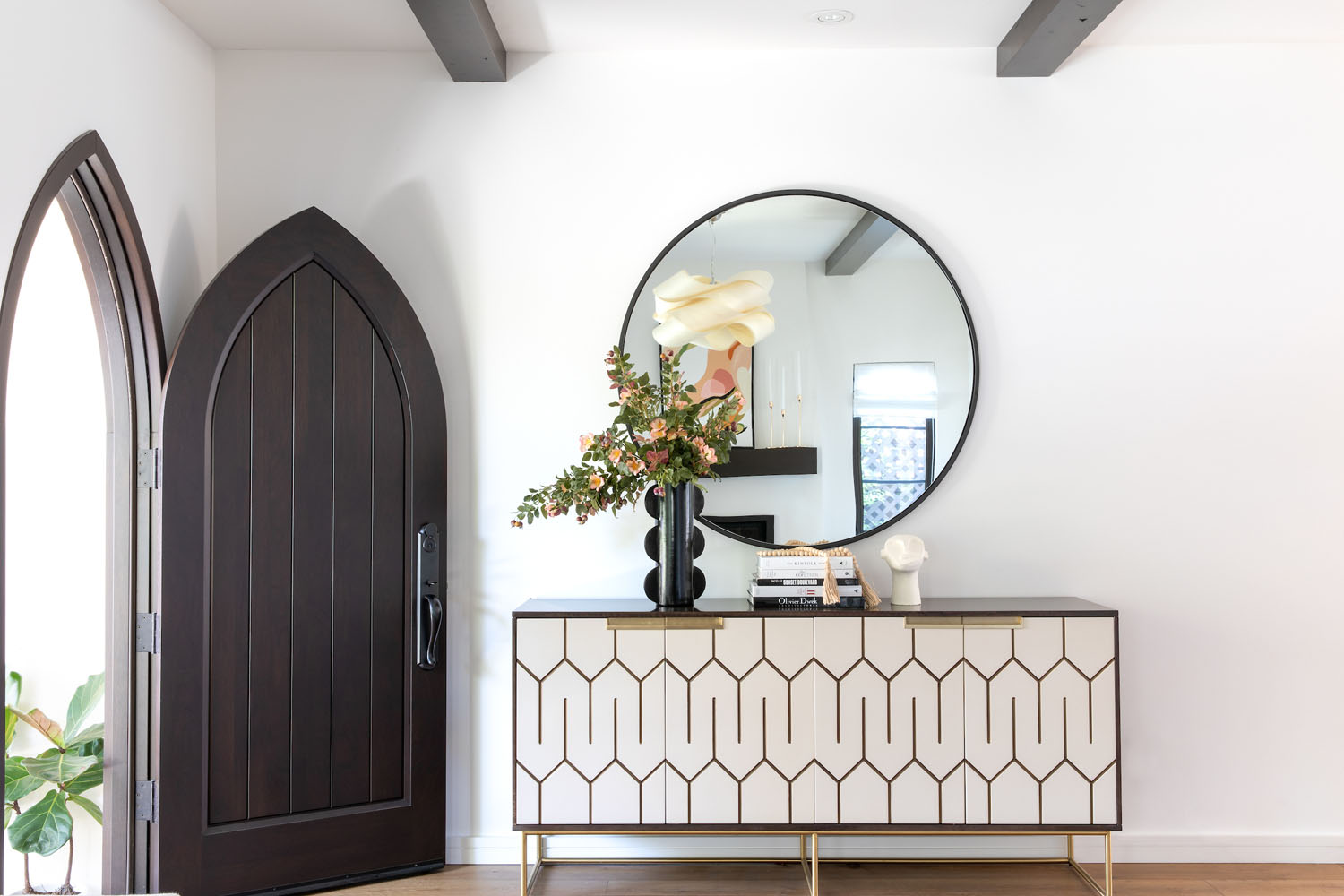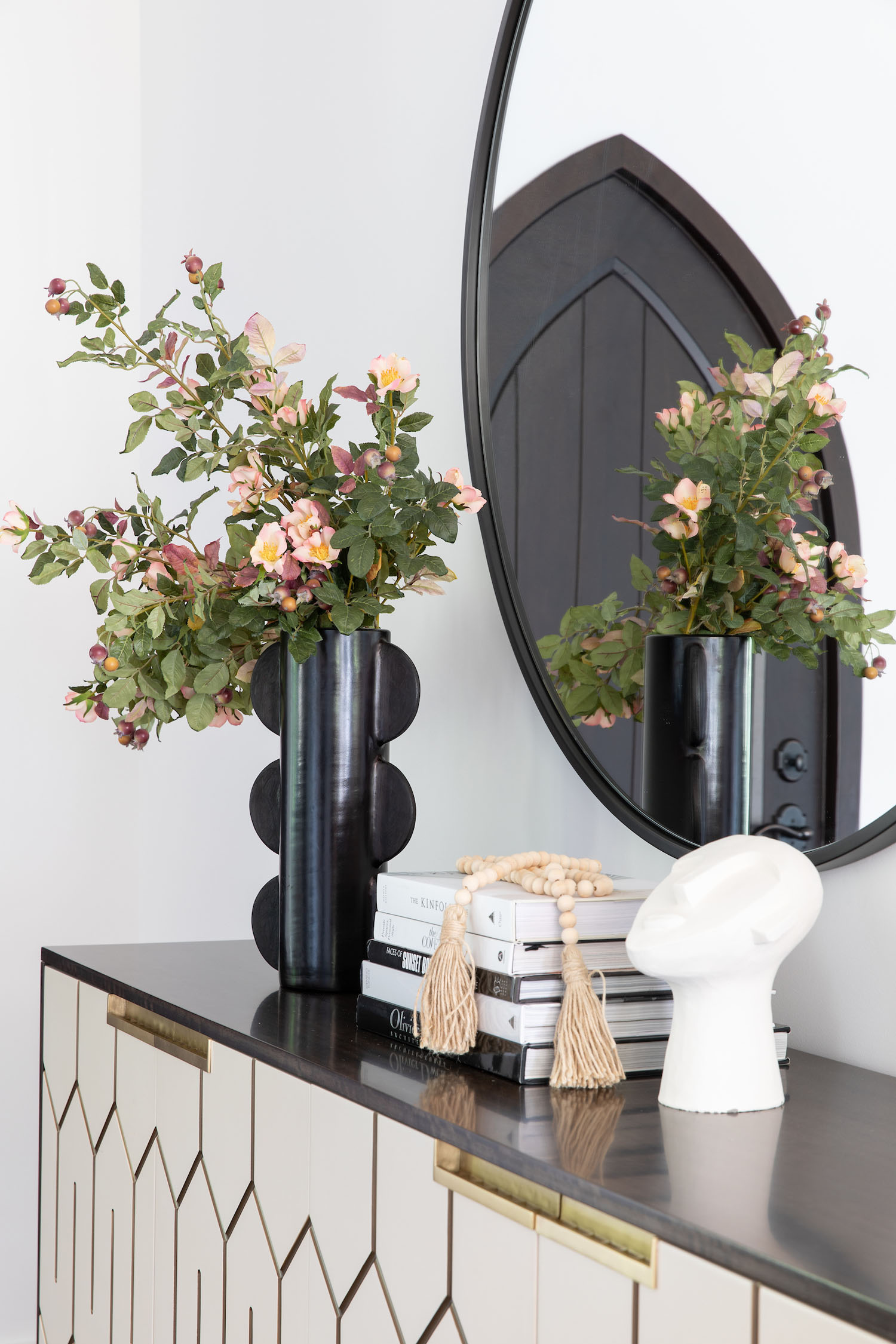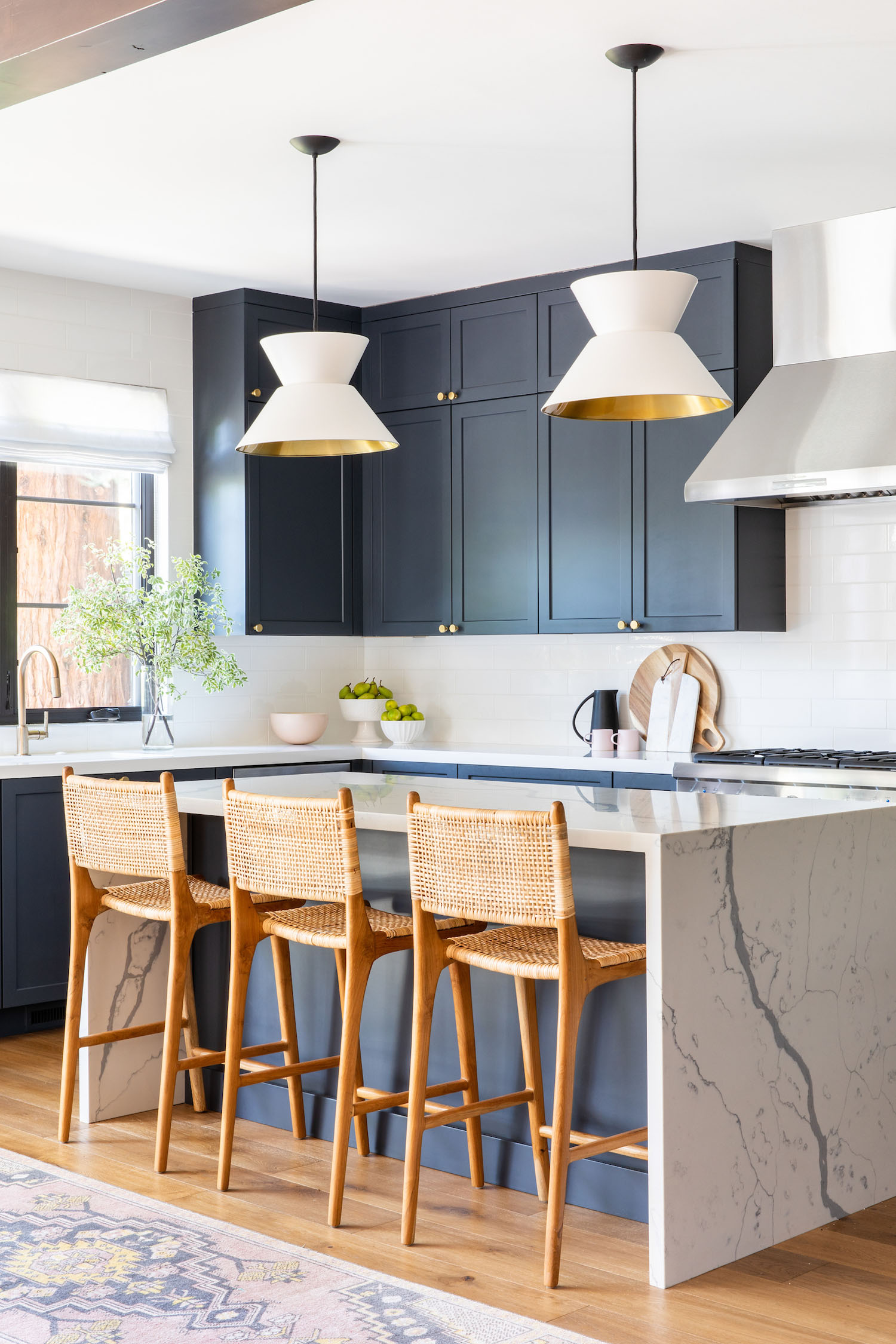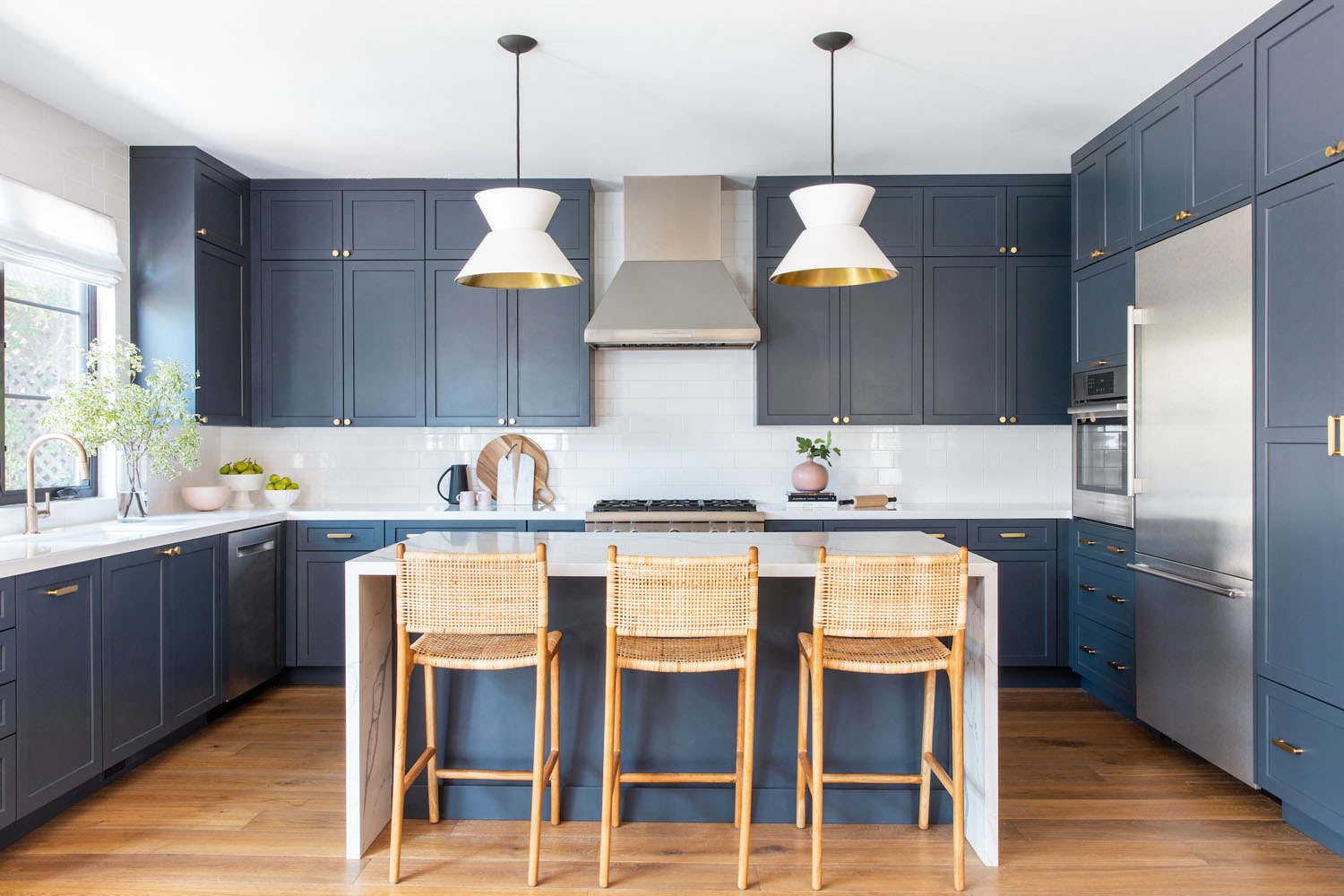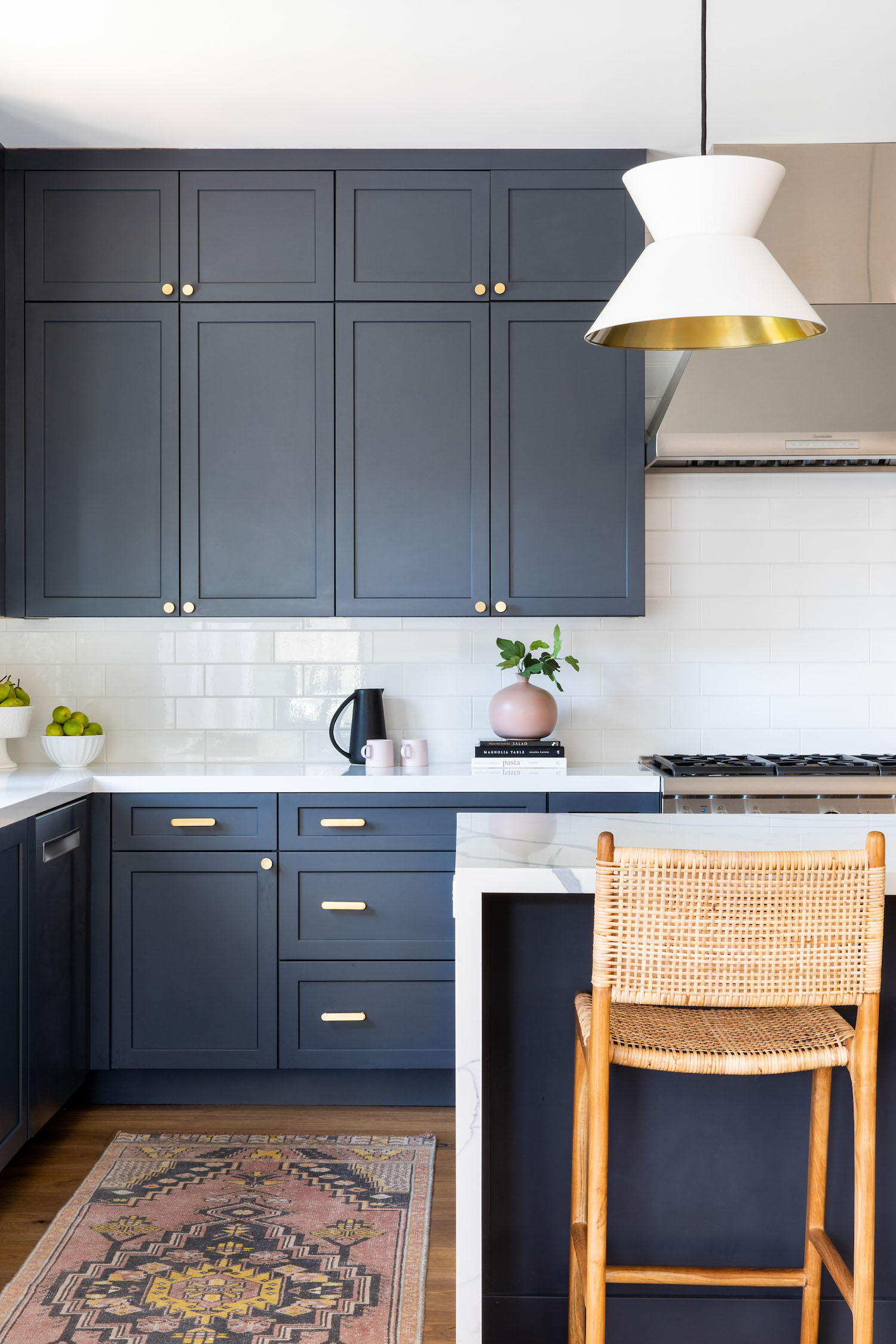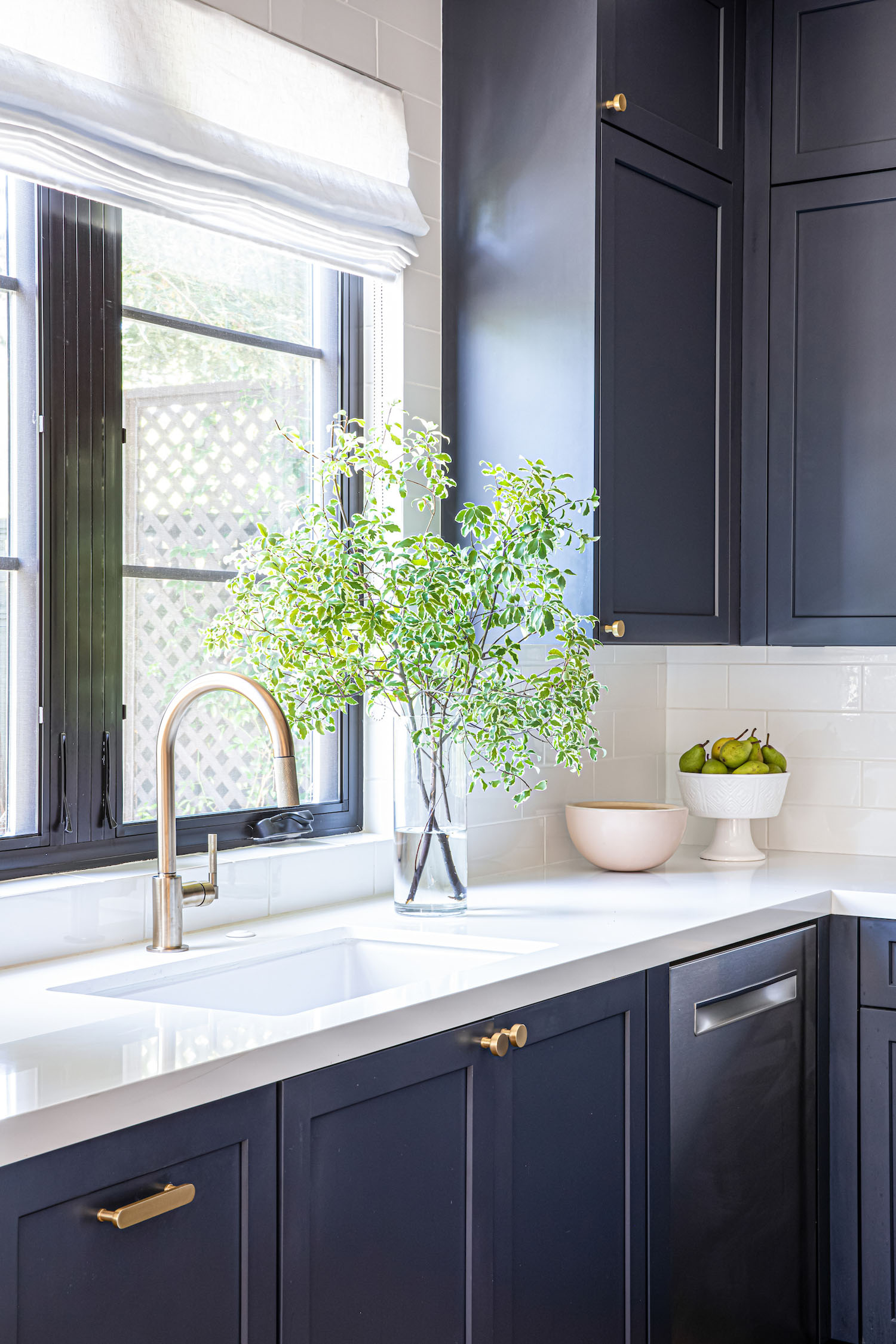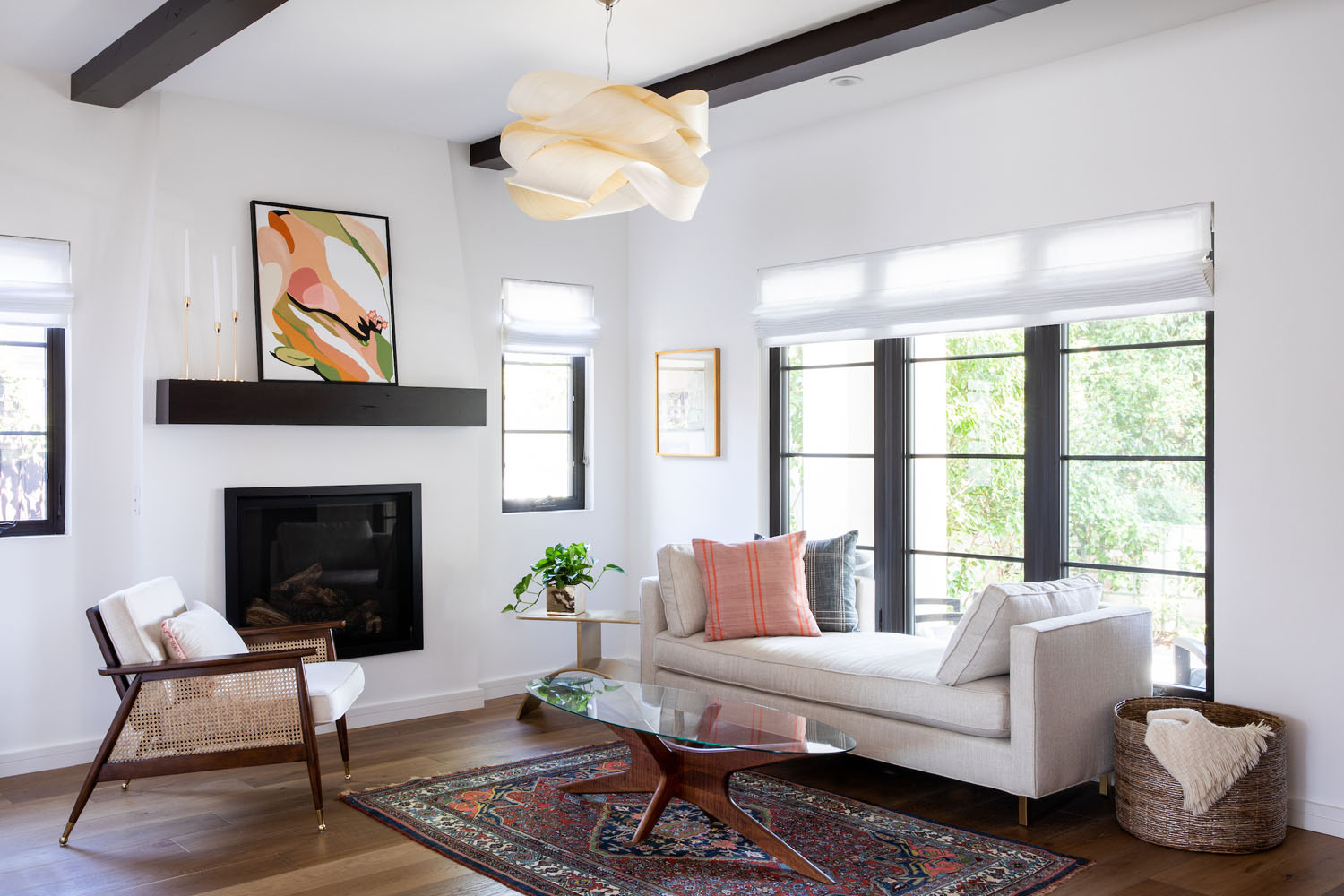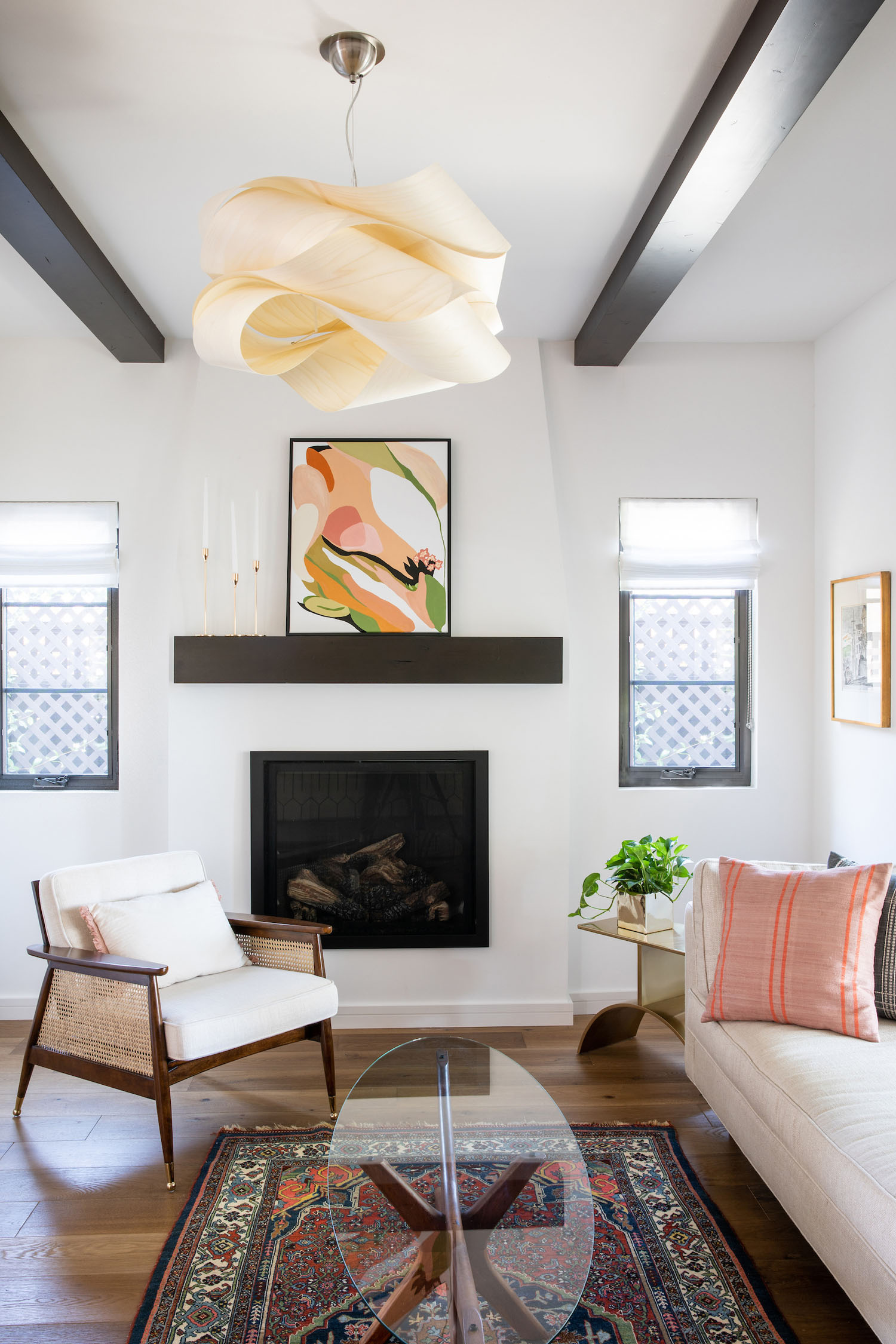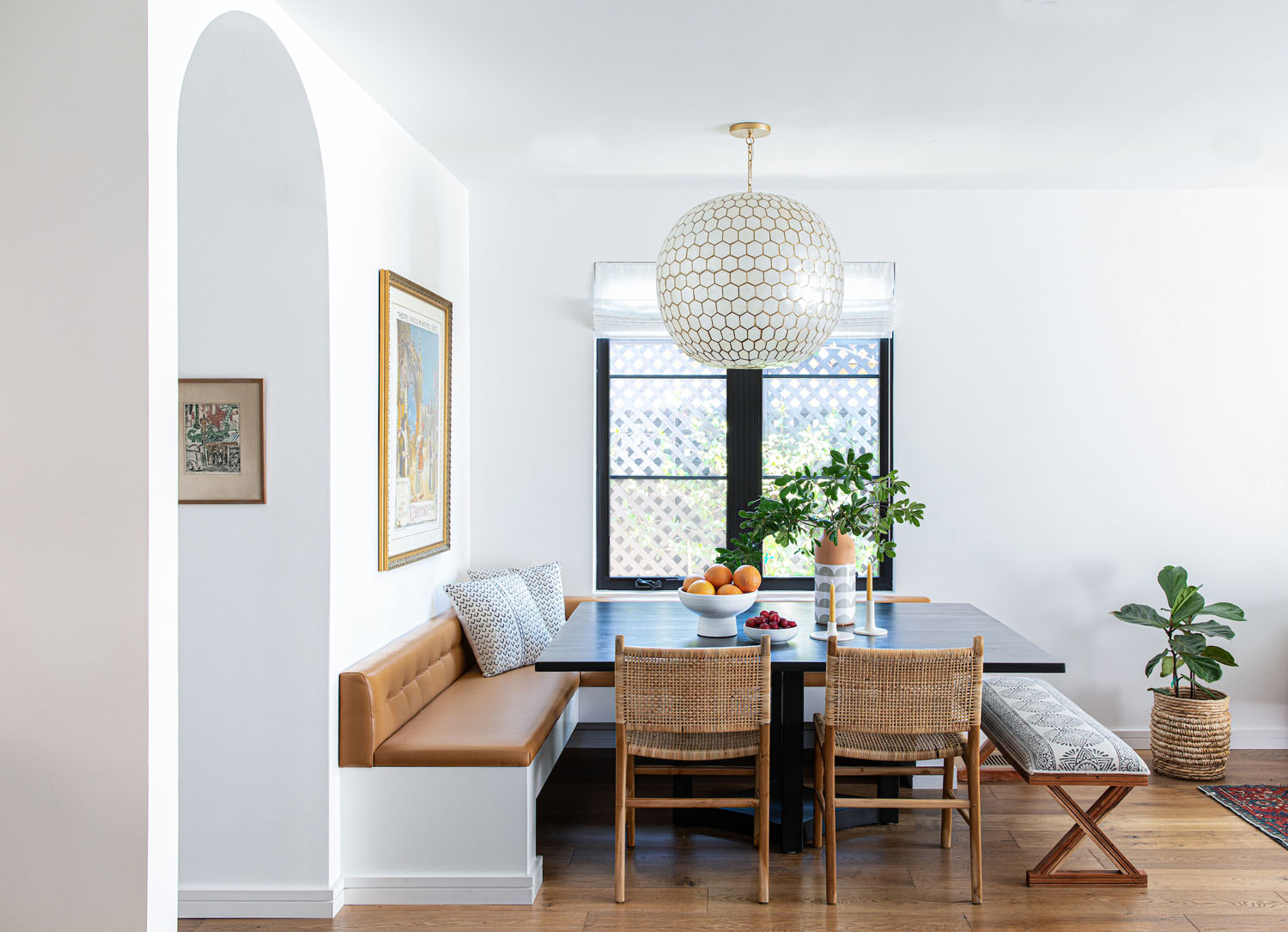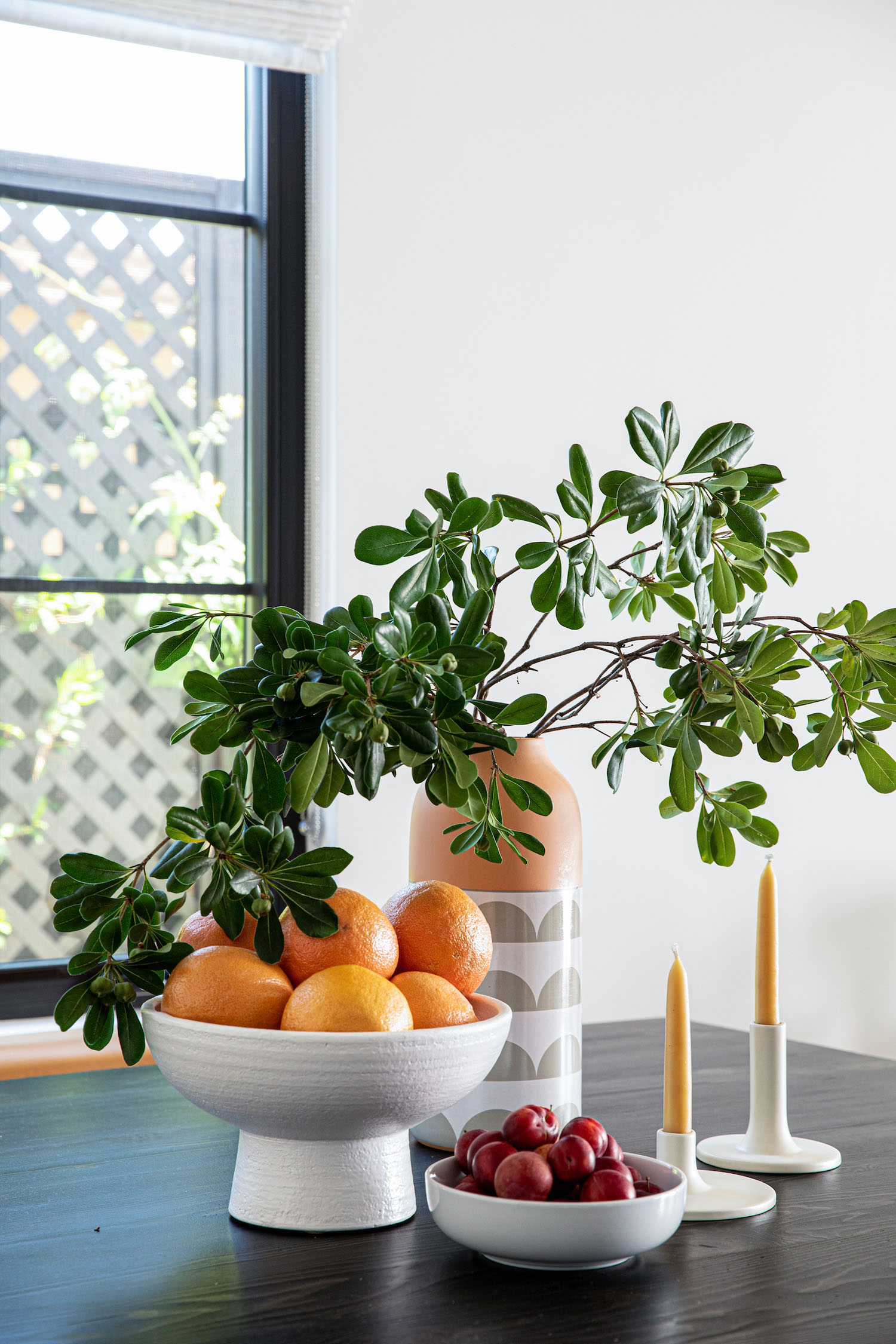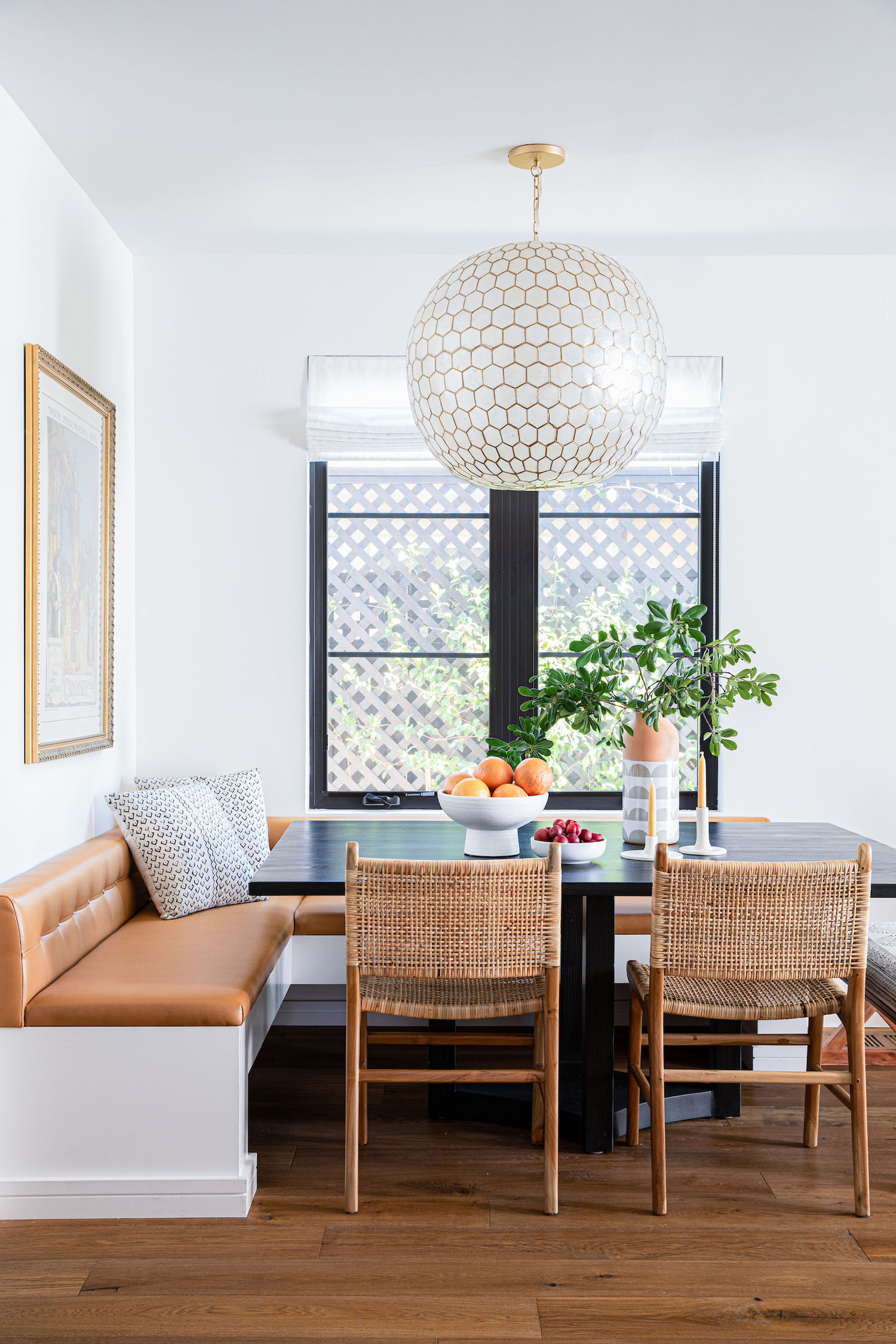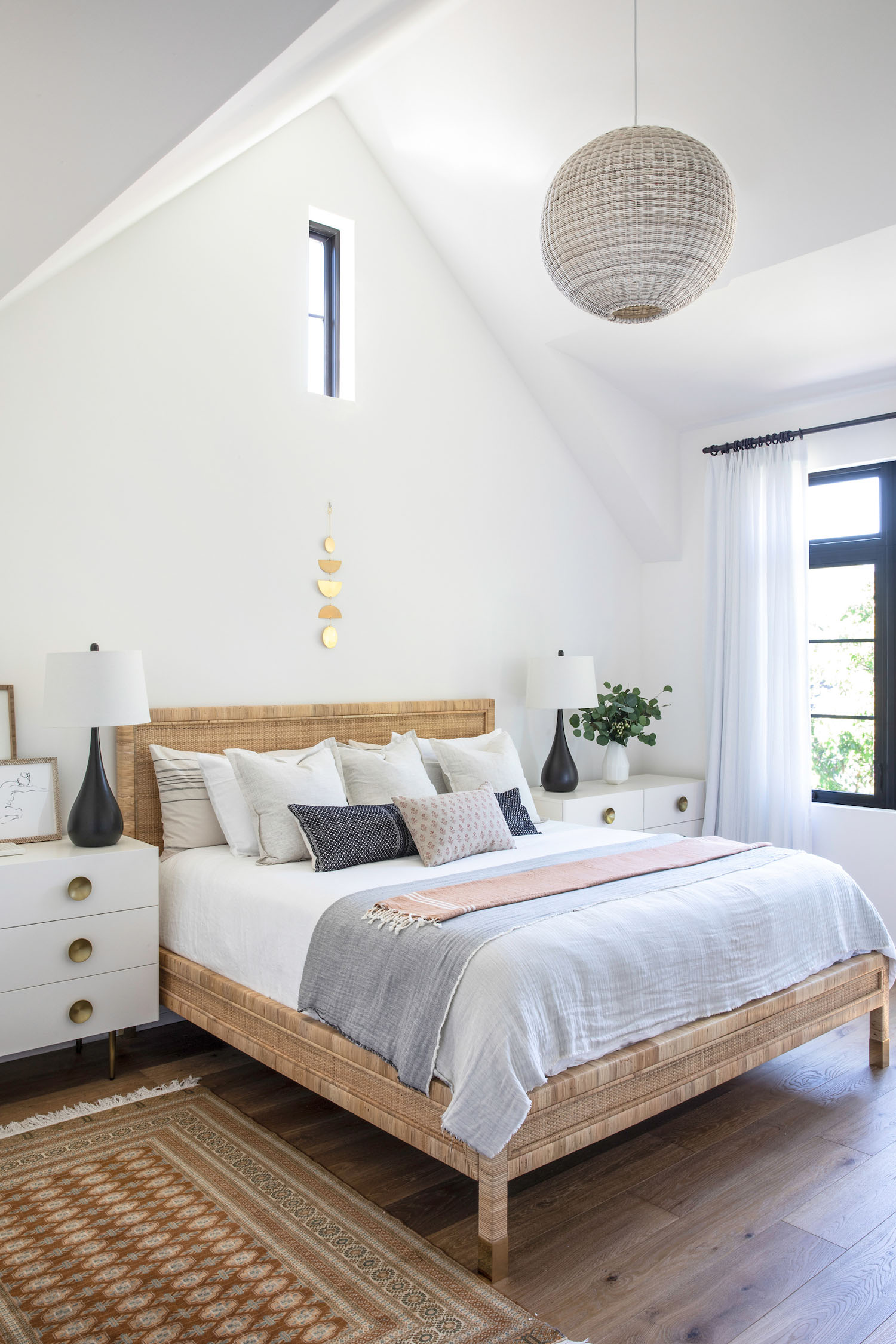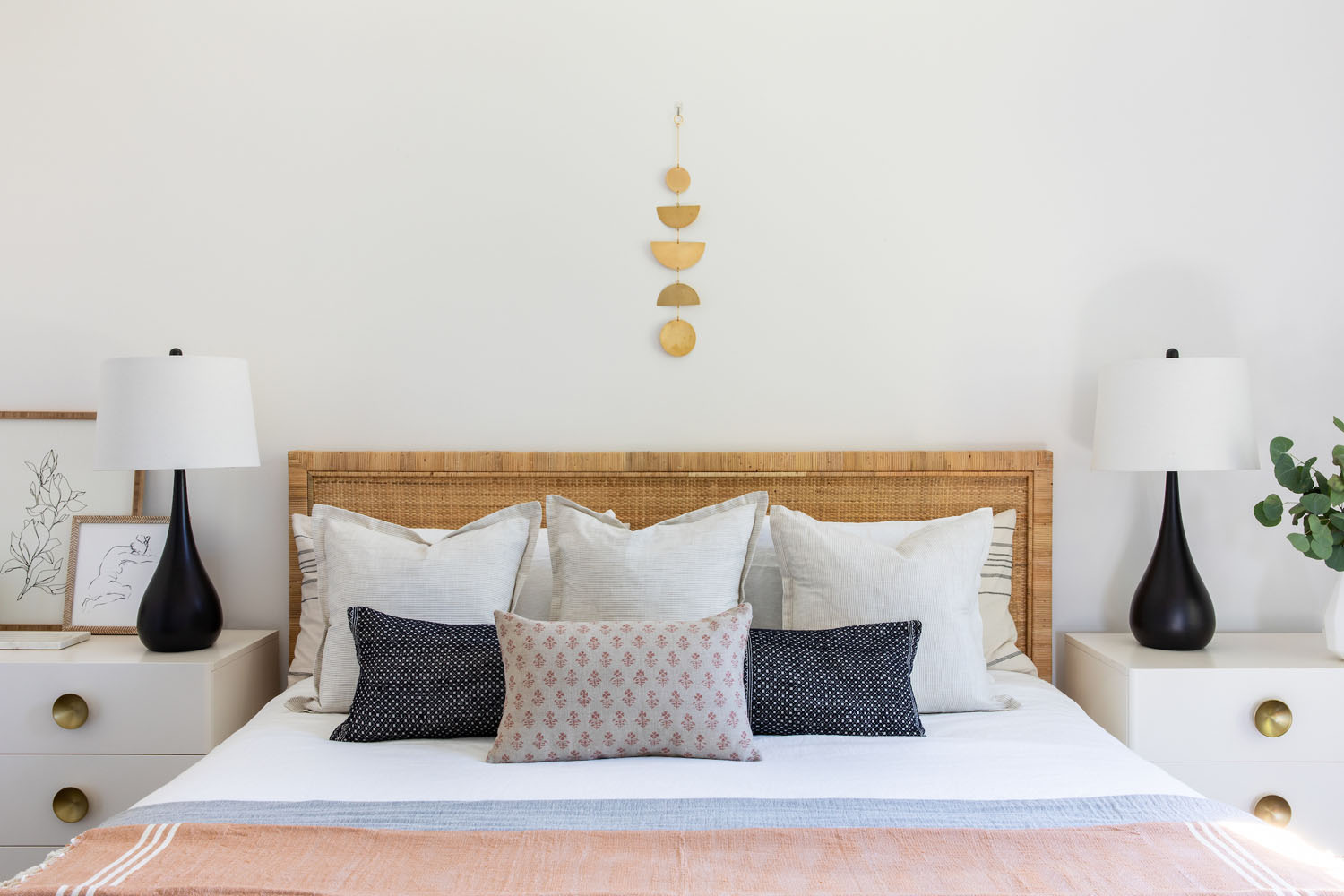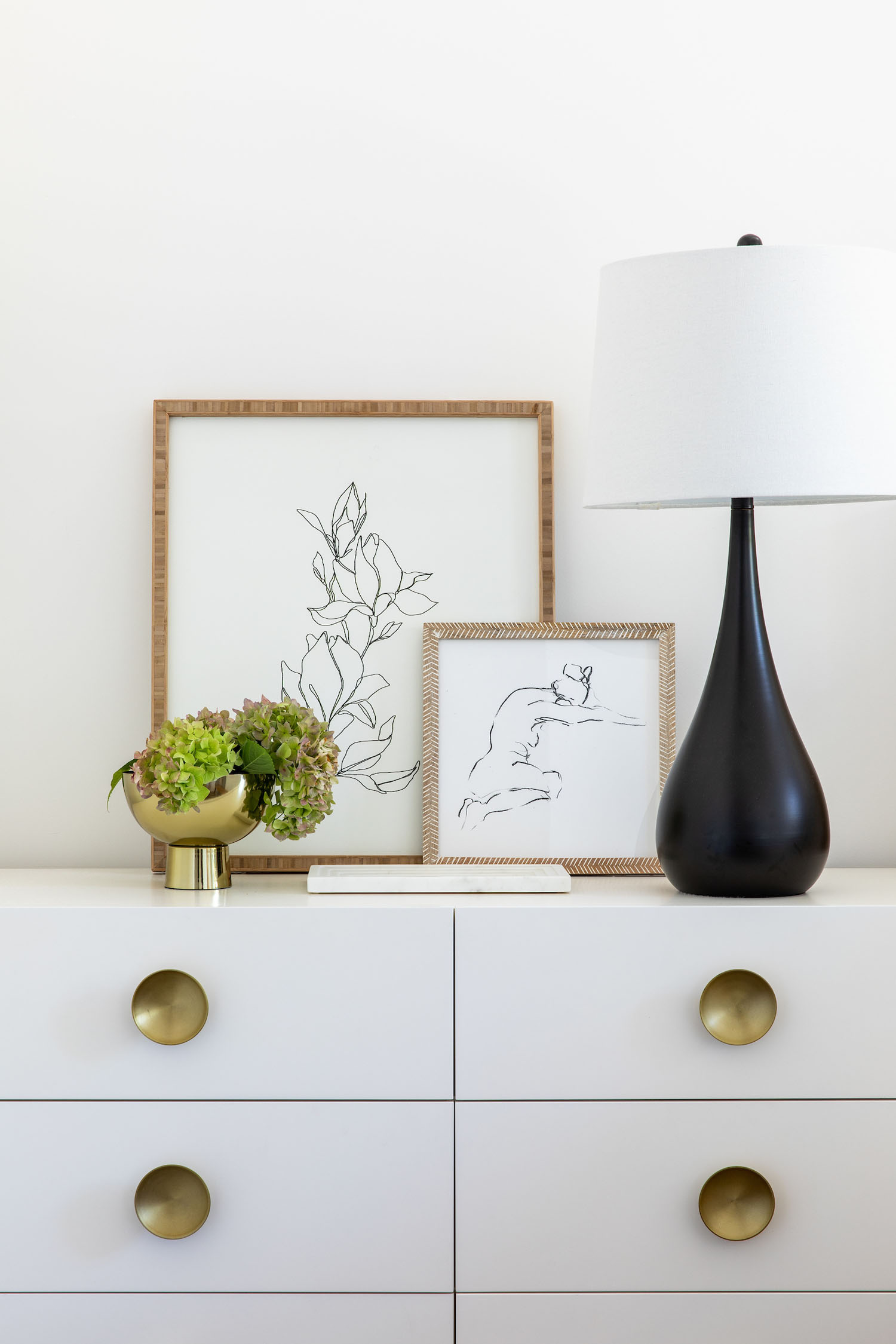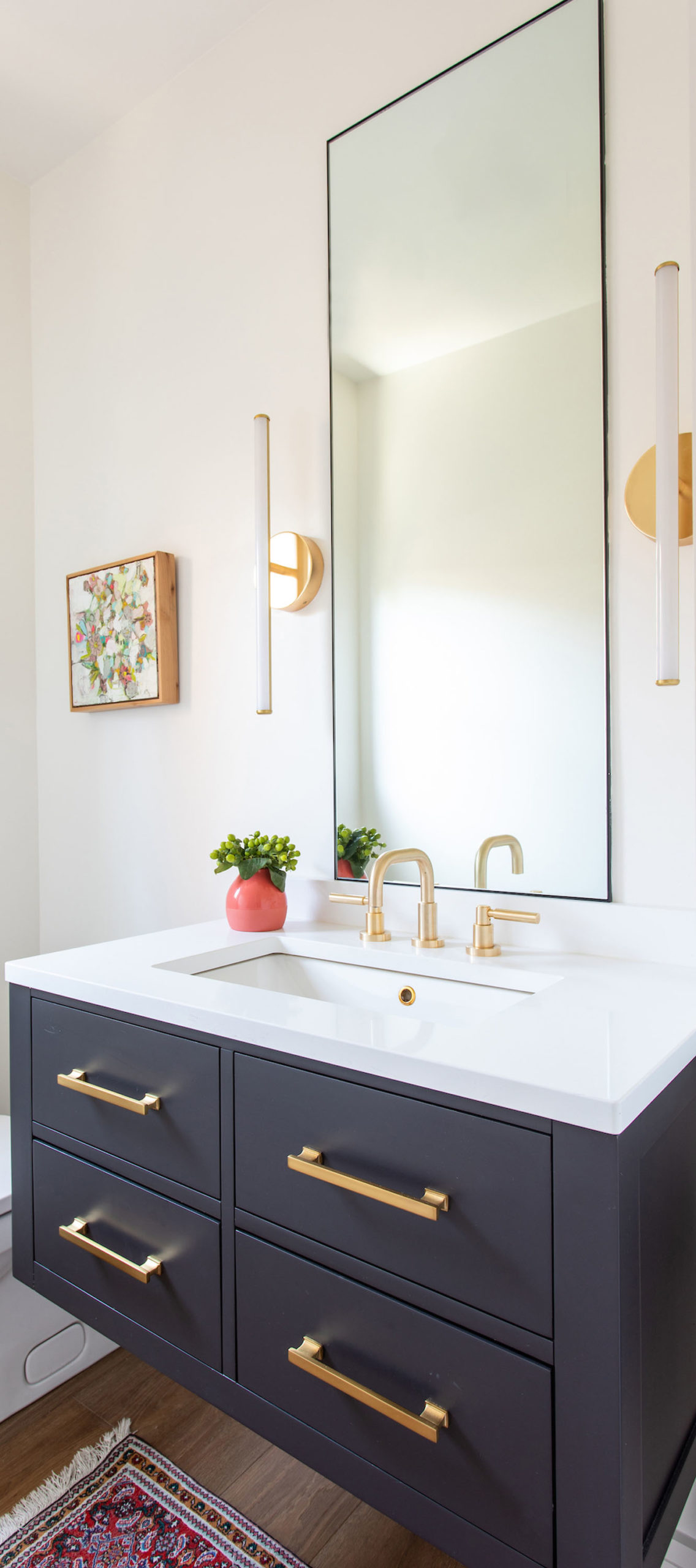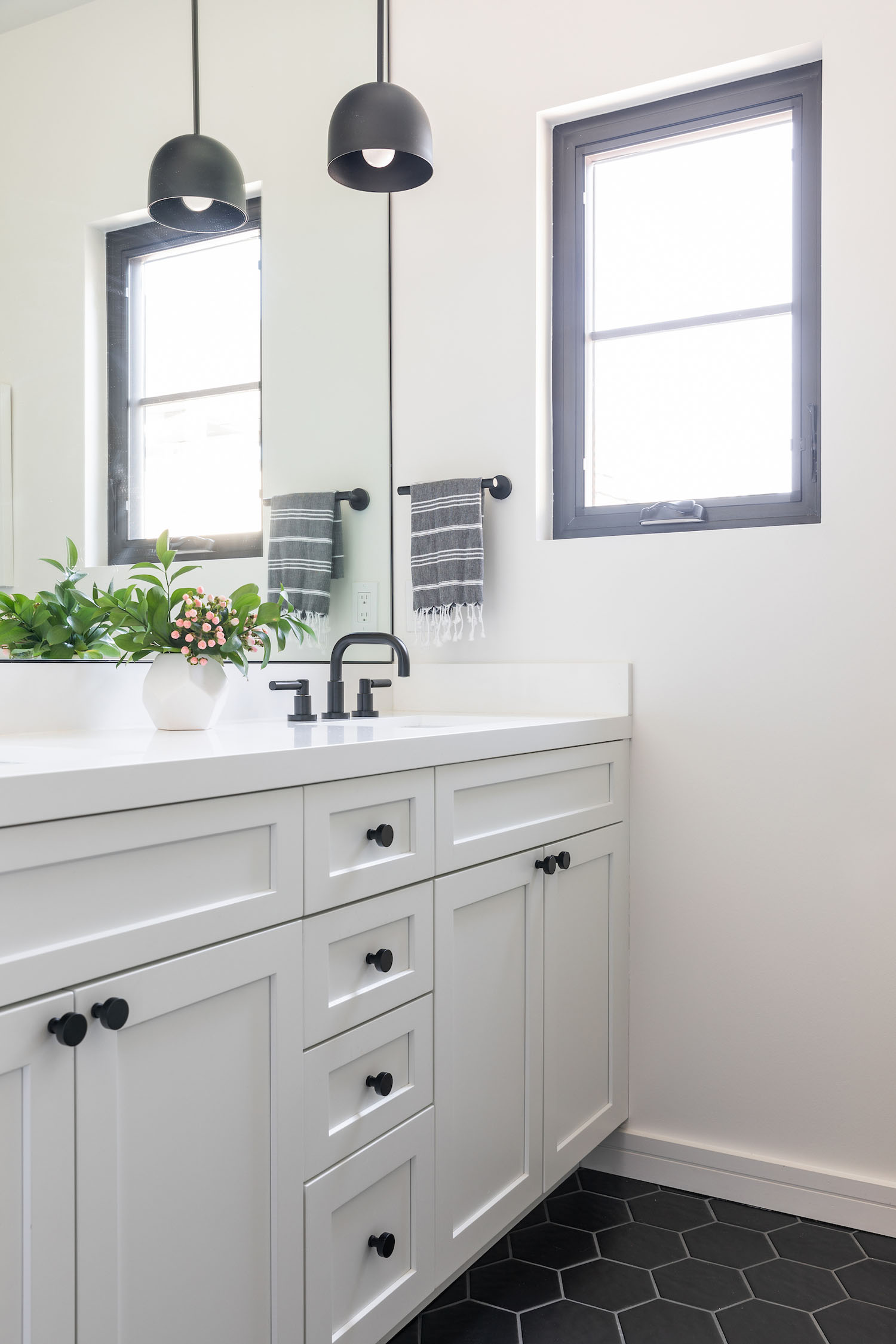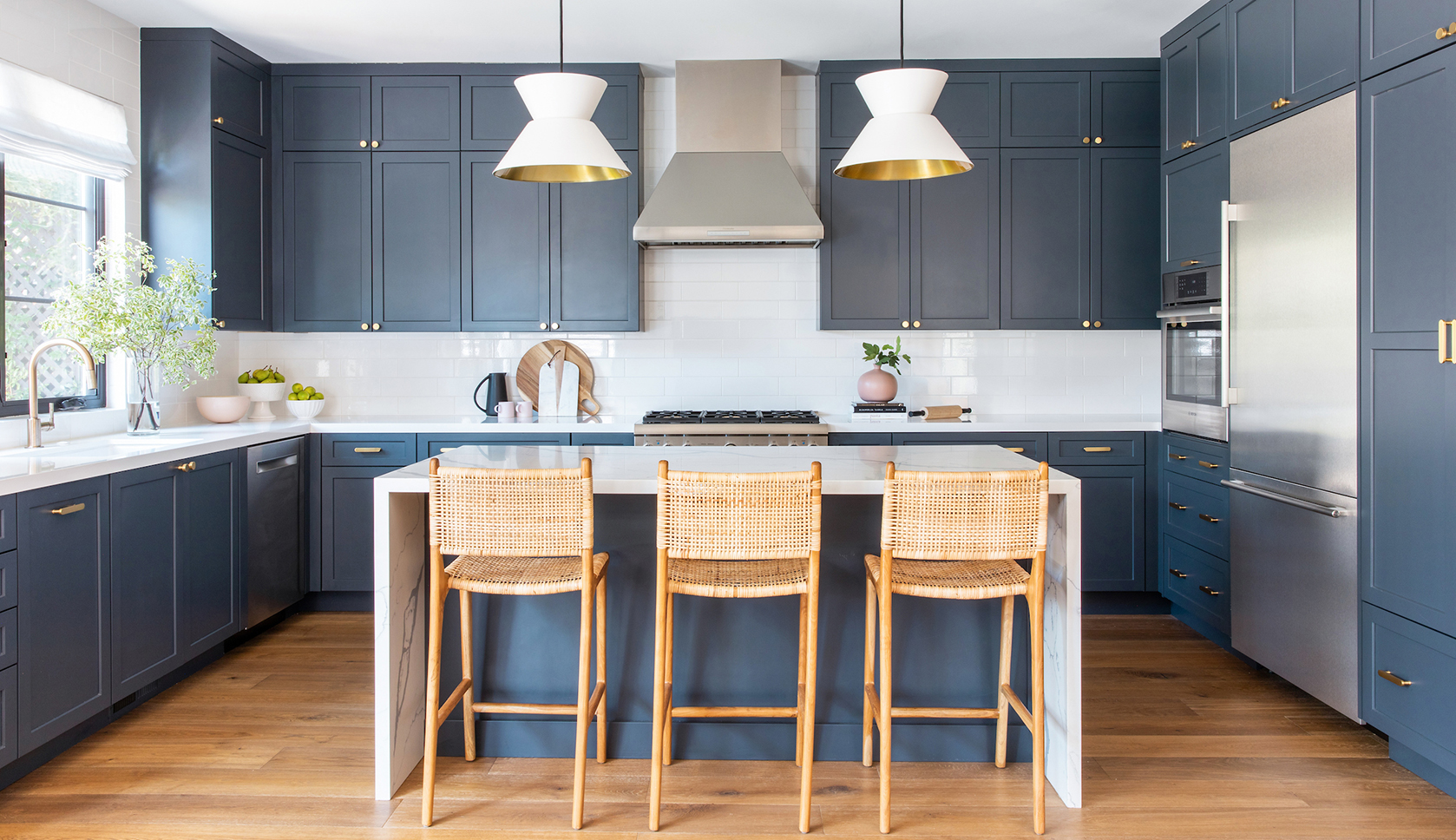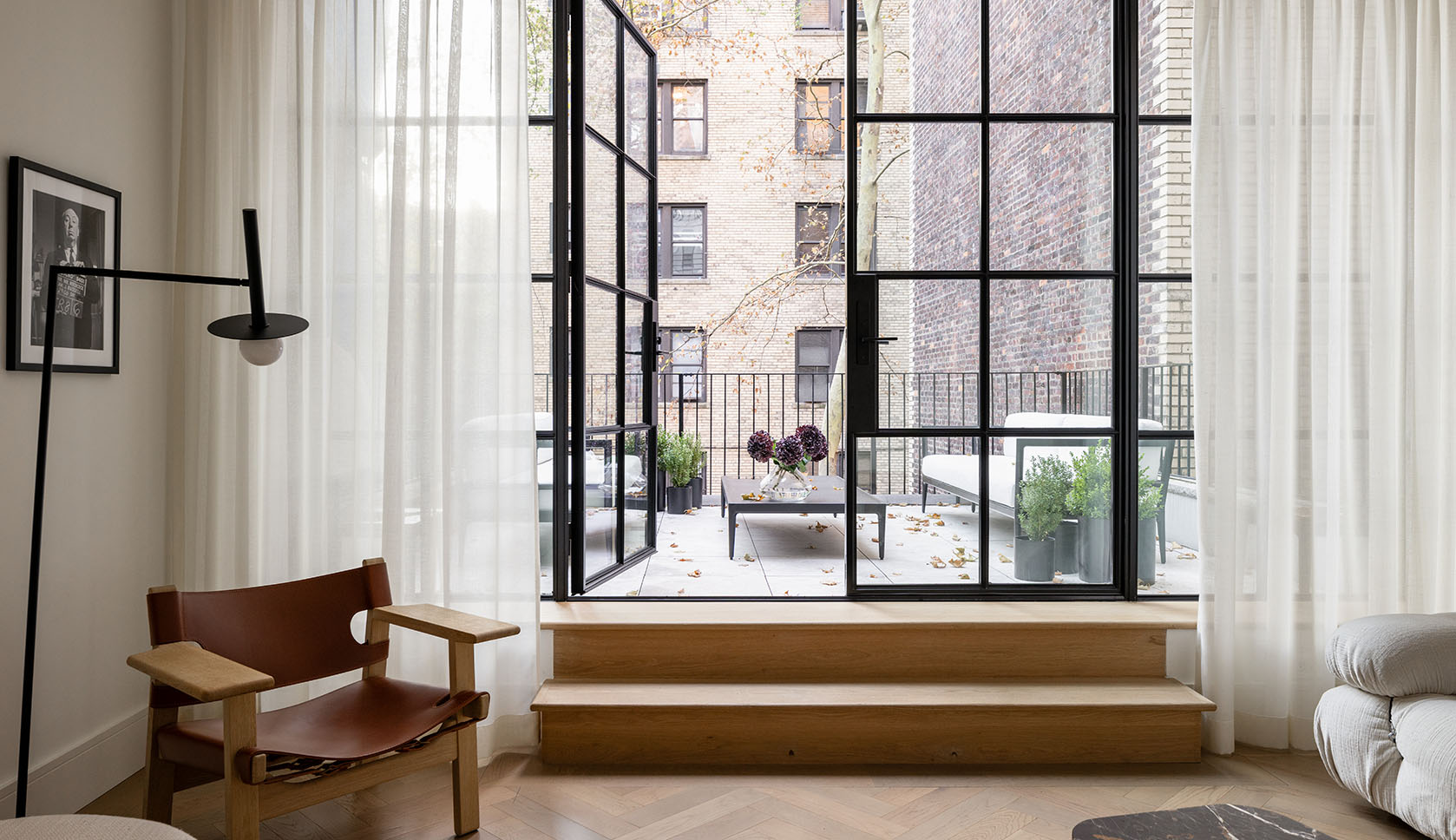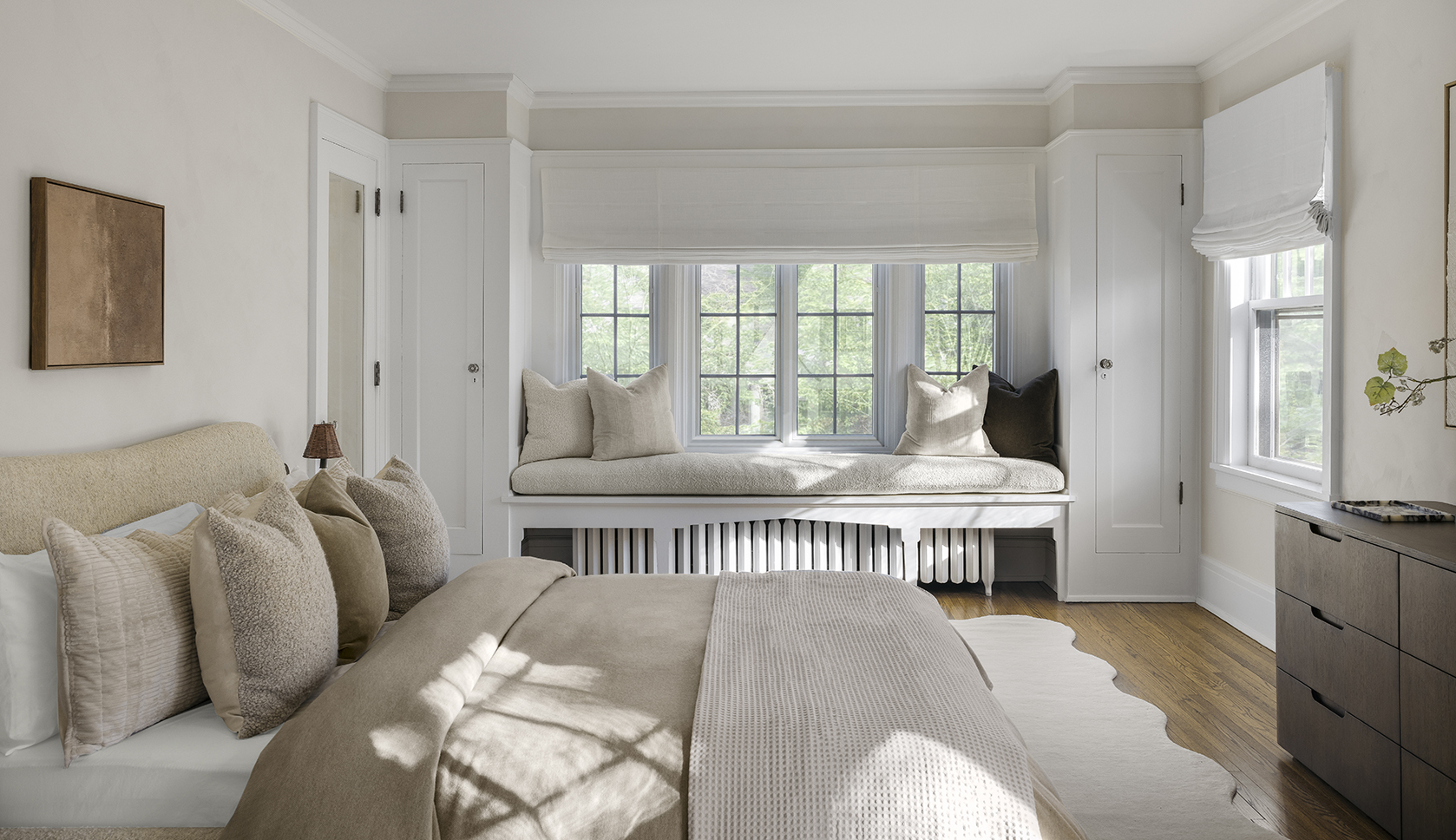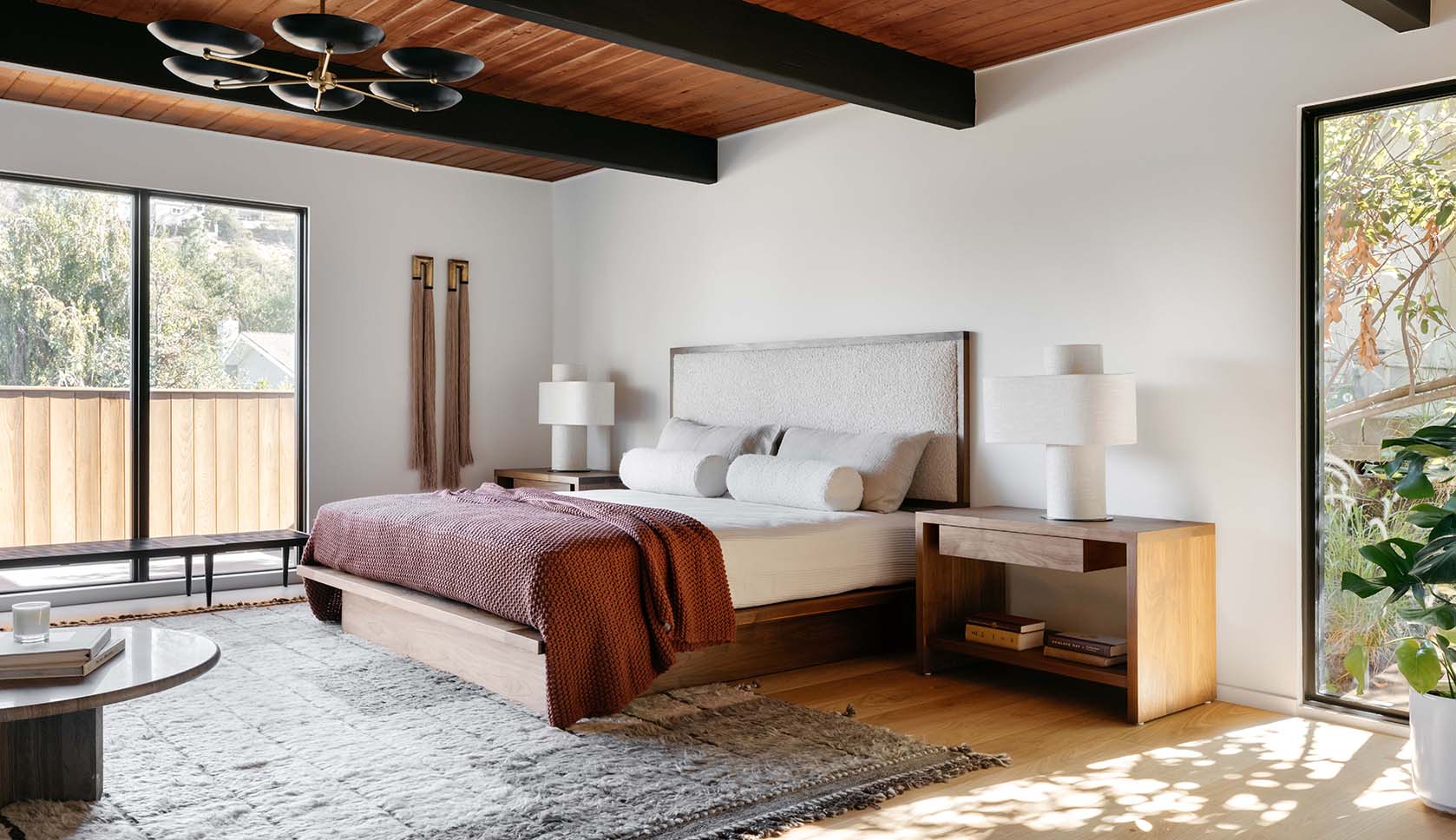“San Carlos is a beautiful little city, with tons of small-town charm,” designer Emily Kates says. “It’s what draws, and keeps, so many people here. But typically speaking, the lots are small, and most were originally apportioned in the 1920s. This lot is only about 4000SF and given that, it was imperative to build a home that felt properly scaled and cohesive with the neighborhood.”
Emily’s clients had a vision of a Tudor home, but in a fresh and edited way. “Architect Natalie Hyland of Hyland Design Group did an incredible job taking the classic architectural cues and articulating them in a contemporary way. We collaborated to get the balance just right, opting for super-smooth stucco and modern windows which had a great interplay with the more classic exaggerated steep roof pitches and curves.” Rather than excessive half timbering, which is typical for a Tudor, they opted for subtle dark wood lintels and simple trim. Emily adds, “The addition of a coffee bean colored gothic arch door just oozes curb appeal and character!”
For furnishings, Emily had the careful task of merging the two different styles of her clients. The couple and their two teenaged children are longtime San Carlos residents. “They are a family that exude warmth, welcome and style,” the designer smiles. “But while they share kind hearts and great taste, it turned out that their aesthetic goals diverged a bit when it came to their new home. His love of modern architecture meant a desire for clean lines and unfussy, uncomplicated forms, while she had a penchant for a more bohemian, beachy feel harkening back to her SoCal and Cuban roots. It was a delicate balancing act to unite these two points of view in a seamless way.”
The designer realized that ultimately, the right formula turned out to be keeping a really light and simple envelope but infusing it with purposeful injections of texture and color. “I think there is a tendency and temptation these days to over-design, grabbing every wall and corner,” Emily reflects. “Sometimes it just isn’t necessary to congest spaces like that, and using sparser, but more intentional pieces can actually have even more impact.”
Read about some of the design decisions and special details in the slideshow.
